Growing Garlic from Cloves: Unlock the secrets to a bountiful harvest right in your backyard! Have you ever dreamed of snipping fresh, pungent garlic straight from your garden to elevate your culinary creations? It’s easier than you think, and this DIY guide will show you exactly how to do it. For centuries, garlic has been revered not only for its distinctive flavor but also for its medicinal properties, playing a vital role in various cultures around the world. From ancient Egyptian tombs to modern-day kitchens, garlic’s legacy is deeply rooted in human history.
But why should you bother growing garlic from cloves yourself? Simple! Store-bought garlic often lacks the robust flavor and freshness of homegrown varieties. Plus, you’ll have complete control over the growing process, ensuring your garlic is free from harmful chemicals and pesticides. Imagine the satisfaction of harvesting plump, flavorful bulbs that you nurtured from a single clove. This DIY project is not only rewarding but also incredibly budget-friendly. So, grab your gardening gloves, and let’s embark on this exciting journey of cultivating your own garlic patch!
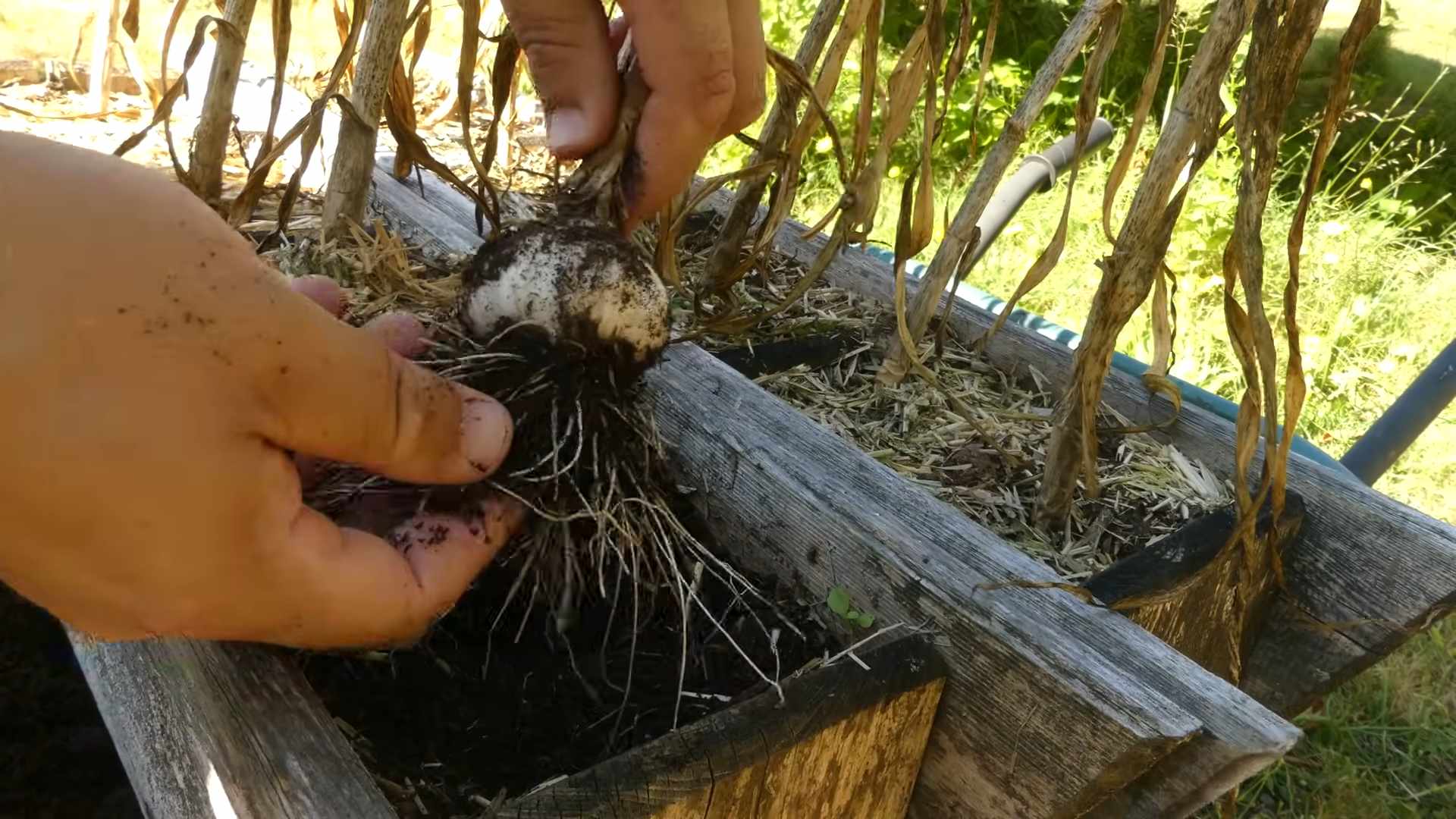
Growing Garlic from Cloves: A Beginner’s Guide
Okay, so you want to grow your own garlic? Awesome! It’s surprisingly easy and incredibly rewarding. There’s nothing quite like cooking with garlic you’ve nurtured from a single clove. Plus, homegrown garlic often has a more intense and delicious flavor than what you find in the store. Let’s dive into how to do it!
Choosing the Right Garlic and Timing
Before we get our hands dirty, let’s talk about garlic selection and timing. This is crucial for a successful harvest.
* Hardneck vs. Softneck: There are two main types of garlic: hardneck and softneck. Hardneck varieties are generally more cold-hardy and produce a flower stalk called a scape (which is also edible and delicious!). Softneck varieties are better suited for warmer climates and are what you typically see braided. I personally prefer hardneck for their flavor and the bonus of scapes.
* Variety Selection: Research which varieties thrive in your specific climate. Your local garden center or agricultural extension office can be a great resource. Some popular hardneck varieties include ‘German Extra Hardy,’ ‘Music,’ and ‘Spanish Roja.’ For softneck, ‘California Early’ and ‘Silverskin’ are common choices.
* Timing is Key: Garlic is typically planted in the fall, about 4-6 weeks before the ground freezes. This allows the cloves to establish roots before winter sets in. In warmer climates, you can plant in late winter or early spring, but fall planting generally yields the best results.
Materials You’ll Need
Here’s a list of everything you’ll need to get started. Don’t worry, it’s not a long list!
* Garlic Cloves: Choose large, healthy cloves from a reputable source. Avoid using garlic from the grocery store, as it may have been treated to prevent sprouting.
* Well-Draining Soil: Garlic needs soil that drains well to prevent rotting. Amend your soil with compost or other organic matter if needed.
* Compost or Aged Manure: This will provide essential nutrients for your garlic.
* Gardening Gloves: To keep your hands clean and protected.
* Trowel or Garden Shovel: For planting the cloves.
* Mulch (Straw, Leaves, or Wood Chips): To insulate the soil and suppress weeds.
* Watering Can or Hose: For watering after planting.
Step-by-Step Planting Guide
Alright, let’s get planting! Follow these steps carefully for the best results.
1. Prepare the Soil: Choose a sunny spot in your garden that gets at least 6 hours of sunlight per day. Clear the area of any weeds or debris. Loosen the soil to a depth of about 12 inches using a garden fork or tiller.
2. Amend the Soil: Incorporate a generous amount of compost or aged manure into the soil. This will provide the garlic with the nutrients it needs to thrive. I usually aim for a 2-3 inch layer of compost.
3. Separate the Cloves: Gently separate the cloves from the garlic bulb, being careful not to damage them. Leave the papery skin on each clove intact. Only plant the largest, healthiest cloves. Smaller cloves will still grow, but they’ll produce smaller bulbs.
4. Plant the Cloves: Plant the cloves pointy-end up, about 4-6 inches deep and 6-8 inches apart. Space rows about 12 inches apart. This spacing allows for good air circulation and prevents overcrowding.
5. Cover with Soil: Cover the cloves with soil and gently pat it down.
6. Water Thoroughly: Water the planted cloves thoroughly to help settle the soil and encourage root growth.
7. Apply Mulch: Apply a 4-6 inch layer of mulch over the planting area. This will help insulate the soil, retain moisture, and suppress weeds. Straw, leaves, or wood chips are all good options.
Caring for Your Garlic
Once your garlic is planted, it’s important to provide it with the proper care to ensure a bountiful harvest.
* Watering: Water regularly, especially during dry periods. Garlic needs consistent moisture, but avoid overwatering, which can lead to rot. Check the soil moisture by sticking your finger about an inch into the soil. If it feels dry, it’s time to water.
* Weeding: Keep the planting area free of weeds, as they can compete with the garlic for nutrients and water. Hand-pull weeds carefully to avoid disturbing the garlic roots. The mulch layer will help suppress weeds, but you’ll still need to do some weeding.
* Fertilizing: In the spring, when the garlic starts to actively grow, fertilize with a balanced fertilizer or compost tea. This will provide the garlic with an extra boost of nutrients. Follow the instructions on the fertilizer package carefully.
* Removing Scapes (Hardneck Varieties): If you’re growing hardneck garlic, you’ll notice a flower stalk (scape) emerging in the spring or early summer. Remove the scapes as soon as they start to curl. This will redirect the plant’s energy into bulb development, resulting in larger bulbs. Scapes are also delicious and can be used in pesto, stir-fries, or grilled.
Harvesting Your Garlic
Harvest time is the most exciting part! Here’s how to know when your garlic is ready and how to harvest it.
* When to Harvest: Garlic is typically ready to harvest in mid-summer, about 8-9 months after planting. The leaves will start to turn yellow and brown, and the stems will begin to fall over. This is a sign that the bulbs are mature. Don’t wait until all the leaves are completely brown, as the bulbs may start to deteriorate.
* How to Harvest: Use a garden fork or shovel to carefully lift the garlic bulbs from the soil. Be gentle to avoid bruising or damaging the bulbs. Loosen the soil around the bulbs before lifting them.
* Curing Your Garlic: Curing is essential for long-term storage. After harvesting, gently brush off any excess soil from the bulbs, but don’t wash them. Tie the garlic plants together in bundles of 4-6 bulbs and hang them in a well-ventilated, dry, and shady place for 2-4 weeks. This allows the outer layers of the bulbs to dry and harden, which helps prevent rot.
* Storing Your Garlic: Once the garlic is fully cured, cut off the roots and trim the stems to about 1-2 inches. Store the bulbs in a cool, dry, and dark place, such as a pantry or basement. Properly cured garlic can last for several months.
Troubleshooting
Even with the best care, you might encounter some problems. Here are a few common issues and how to address them.
* Garlic Rot: This is usually caused by overwatering or poorly draining soil. Make sure your soil drains well and avoid overwatering. If you notice any bulbs that are rotting, remove them immediately to prevent the spread of disease.
* Pests: Garlic is generally pest-resistant, but it can be susceptible to certain pests, such as onion maggots and nematodes. Use organic pest control methods, such as neem oil or insecticidal soap, to control these pests.
* Nutrient Deficiencies: Yellowing leaves can be a sign of nutrient deficiencies. Fertilize with a balanced fertilizer or compost tea to provide the garlic with the nutrients it needs.
Enjoy Your Homegrown Garlic!
Congratulations! You’ve successfully grown your own garlic. Now you can enjoy the delicious flavor of homegrown garlic in all your favorite dishes. Use it in sauces, soups, stir-fries, or roasted vegetables. You can also save some of the largest cloves to plant next year’s crop. Growing garlic is a rewarding experience, and I hope this guide has helped you get started. Happy gardening!
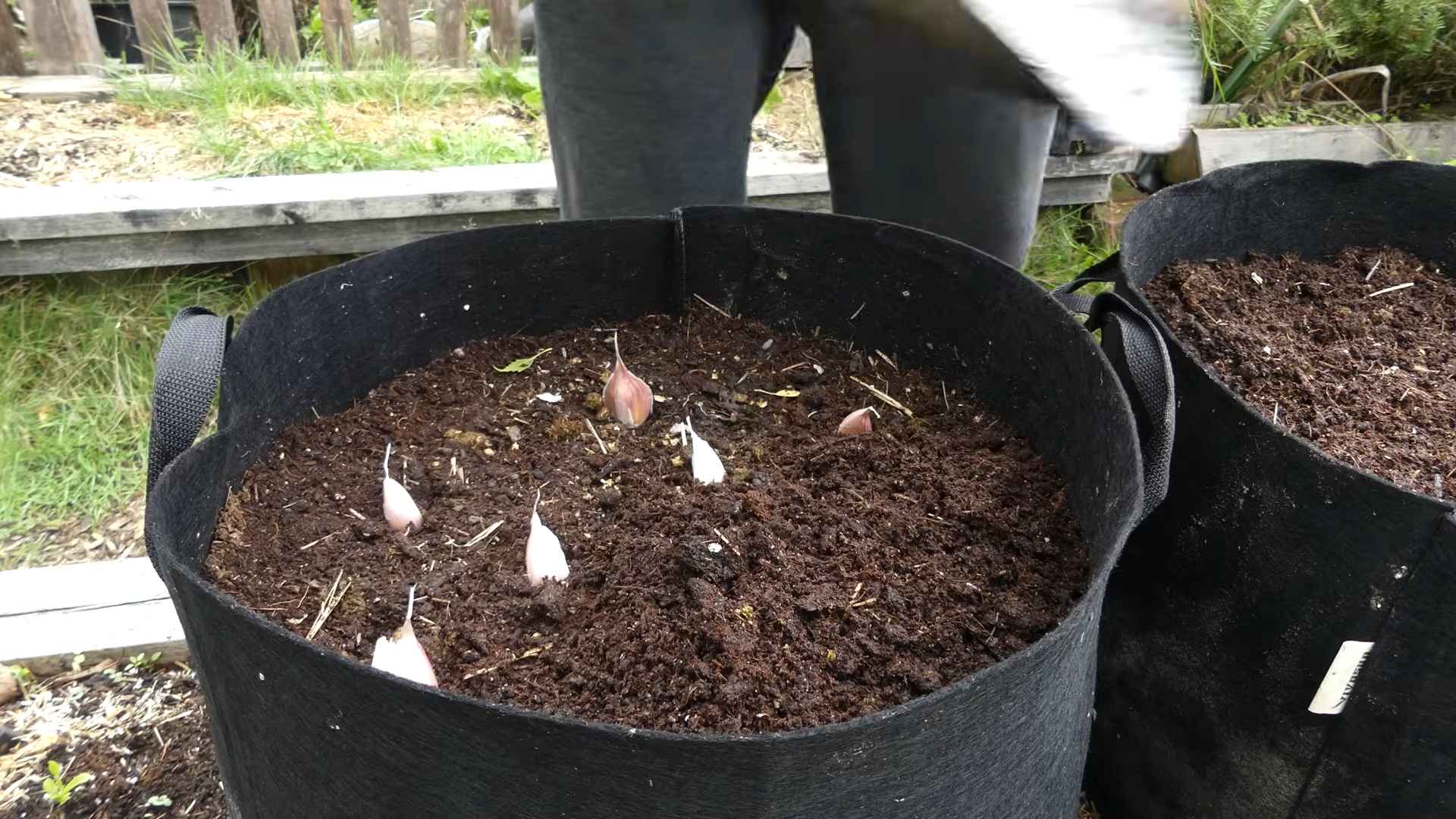
Conclusion
So, there you have it! Growing garlic from cloves isn’t just a gardening project; it’s an investment in flavor, a connection to the earth, and a surprisingly simple way to elevate your culinary creations. Forget those bland, imported bulbs from the grocery store. Imagine the satisfaction of harvesting your own plump, potent garlic, bursting with fresh, vibrant flavor that you simply can’t find anywhere else.
This DIY trick is a must-try for several compelling reasons. First, you gain complete control over the quality of your garlic. You know exactly where it came from, how it was grown, and what (if anything) was used to treat it. This is especially important for those seeking organic or sustainable options. Second, growing your own garlic is incredibly cost-effective. A single bulb of seed garlic can yield a substantial harvest, providing you with enough garlic to last for months, or even a year, depending on your consumption. Third, and perhaps most importantly, it’s incredibly rewarding. There’s something deeply satisfying about nurturing a plant from a single clove to a fully formed bulb.
But the benefits don’t stop there. Growing garlic from cloves allows you to experiment with different varieties. From the fiery heat of Rocambole to the mild sweetness of Artichoke garlic, the possibilities are endless. Consider planting a mix of varieties to discover your personal favorites and to ensure a continuous harvest throughout the season. You can also experiment with different planting times to optimize your yield and flavor profile. Some gardeners prefer to plant in the fall for a larger harvest the following summer, while others plant in the spring for a smaller, but still worthwhile, crop.
Variations to consider:
* Container Gardening: If you don’t have a traditional garden, don’t despair! Garlic thrives in containers, making it perfect for balconies, patios, or even sunny windowsills. Just be sure to choose a large enough pot (at least 12 inches in diameter) and use a well-draining potting mix.
* Companion Planting: Garlic is a fantastic companion plant for many vegetables, including tomatoes, peppers, and strawberries. Its pungent aroma helps to repel pests and can even improve the flavor of neighboring plants.
* Garlic Scapes: Don’t forget about the scapes! These curly, edible flower stalks appear in the spring and are a delicious delicacy. They can be used in pesto, stir-fries, or simply grilled and enjoyed as a side dish.
We wholeheartedly encourage you to give this DIY trick a try. It’s a simple, rewarding, and delicious way to connect with nature and enhance your culinary skills. And once you’ve experienced the joy of harvesting your own homegrown garlic, you’ll never want to go back to store-bought again.
So, grab some seed garlic, get your hands dirty, and prepare to be amazed. We’re confident that you’ll be thrilled with the results. And most importantly, we want to hear about your experience! Share your photos, tips, and stories with us in the comments below. Let’s build a community of garlic growers and inspire others to discover the magic of growing their own food. What variety did you plant? What challenges did you face? What successes did you celebrate? We can’t wait to hear from you! Happy growing!
Frequently Asked Questions (FAQ)
Q: What kind of garlic should I use to grow my own? Can I just use garlic from the grocery store?
A: While technically you *can* try growing garlic from grocery store bulbs, it’s generally not recommended. Grocery store garlic is often treated to prevent sprouting, and it may also be a variety that’s not well-suited to your local climate. The best option is to purchase “seed garlic” from a reputable nursery or online supplier. Seed garlic is specifically grown for planting and is guaranteed to be disease-free and true to type. Look for varieties that are known to thrive in your region for the best results. Using seed garlic will significantly increase your chances of a successful and bountiful harvest.
Q: When is the best time to plant garlic?
A: The ideal planting time for garlic depends on your climate. In most regions with cold winters, fall planting (typically October or November) is recommended. This allows the garlic cloves to establish roots before the ground freezes, resulting in larger bulbs the following summer. In areas with mild winters, you can plant garlic in the early spring (February or March). However, fall-planted garlic generally produces larger bulbs. Research the specific recommendations for your local climate to determine the optimal planting time.
Q: How deep and how far apart should I plant the garlic cloves?
A: Plant garlic cloves approximately 2 inches deep and 6 inches apart. Space rows about 12 inches apart. Ensure the pointed end of the clove is facing upwards. Proper spacing is crucial for allowing the bulbs to develop fully and for preventing overcrowding, which can lead to smaller bulbs and increased risk of disease.
Q: What kind of soil is best for growing garlic?
A: Garlic prefers well-drained, fertile soil that is rich in organic matter. Amend your soil with compost or well-rotted manure before planting to improve drainage and nutrient content. Avoid heavy clay soils, as they can retain too much moisture and lead to bulb rot. A slightly acidic to neutral soil pH (around 6.0 to 7.0) is ideal.
Q: How much water does garlic need?
A: Garlic needs consistent moisture, especially during the spring when the bulbs are actively growing. Water deeply whenever the top inch of soil feels dry. Avoid overwatering, as this can lead to bulb rot. Reduce watering as the plants begin to mature and the leaves start to turn yellow.
Q: How do I know when my garlic is ready to harvest?
A: Garlic is typically ready to harvest in mid-summer, about 8-9 months after planting. A good indicator is when the lower leaves start to turn yellow and brown, but the top leaves are still green. Don’t wait until all the leaves have died back, as this can result in the bulbs splitting and becoming less flavorful. Gently dig up a bulb to check its size and maturity. If the bulb is plump and the cloves are well-defined, it’s time to harvest.
Q: How do I cure garlic after harvesting?
A: Curing is essential for preserving garlic and developing its flavor. After harvesting, gently brush off any excess soil and allow the bulbs to dry in a well-ventilated, shaded area for 2-3 weeks. You can hang the bulbs in bunches or spread them out on screens or racks. The garlic is properly cured when the necks are dry and tight, and the outer skins are papery.
Q: How should I store my cured garlic?
A: Store cured garlic in a cool, dry, and dark place. A temperature between 60-70°F (15-21°C) is ideal. Avoid storing garlic in the refrigerator, as this can cause it to sprout. Properly cured and stored garlic can last for several months.
Q: What are garlic scapes, and what can I do with them?
A: Garlic scapes are the curly flower stalks that emerge from hardneck garlic varieties in the spring. They are a delicious and versatile ingredient with a mild garlic flavor. Harvest the scapes when they are still tender and curly. They can be used in pesto, stir-fries, soups, or simply grilled and enjoyed as a side dish. Removing the scapes also encourages the plant to put more energy into bulb development, resulting in larger garlic bulbs.
Q: My garlic plants have yellow leaves. What could be the problem?
A: Yellowing leaves can indicate several potential problems, including nutrient deficiencies, overwatering, underwatering, or disease. Check the soil moisture and ensure that the plants are receiving adequate water and nutrients. If the problem persists, consider testing your soil to determine if there are any nutrient deficiencies. Garlic can be susceptible to certain fungal diseases, so inspect the plants for any signs of disease and take appropriate action if necessary.


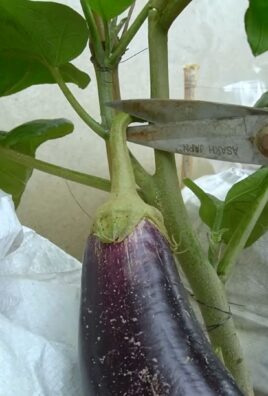
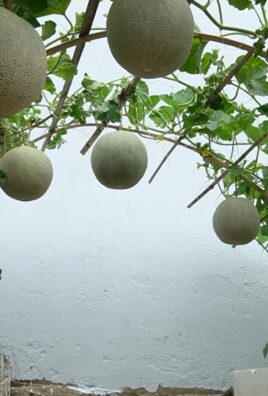
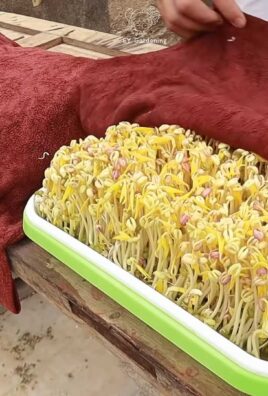
Leave a Comment